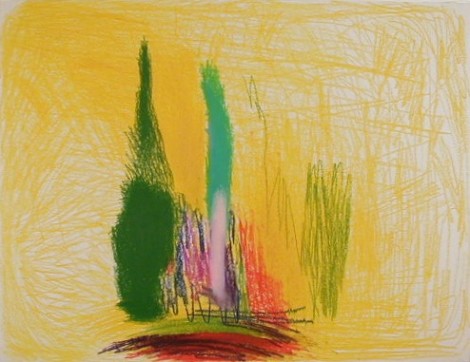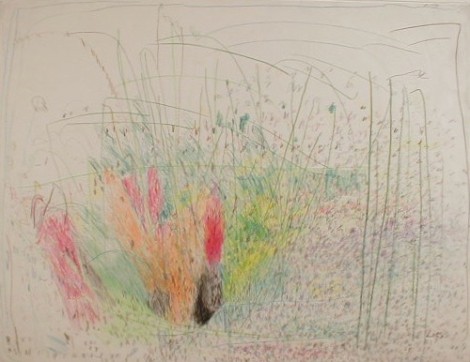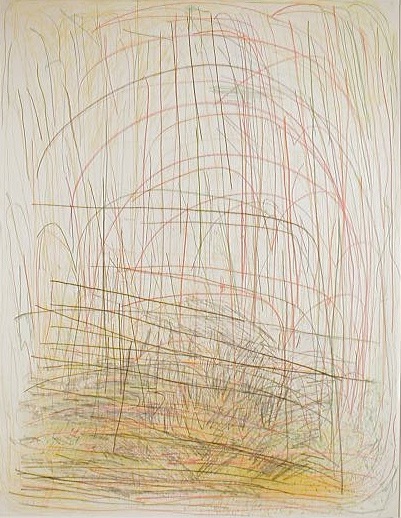Untitled
— Hutting, Lies
Lies Hutting’s smoothly sketched drawings are ‘landscapes of emotion’. For her tenuous structures she first creates a foundation, a base, often with a clear focus in the centre. She then applies ascending lines in long strokes, creating a delicate architecture. Shading, arches, spirals, intersecting lines, straight and curved, rotating and oscillating movements spread out in different directions, so that an unfathomable space is created from a mysteriously impenetrable fabric. She works without hesitation, without corrections, knowing perfectly where to stop as she approaches the edge of the paper. The corners are rounded using decorative lashes. She has an exuberant sense of colour with which she expresses her indescribable innermost feelings. Her world of emotions is made visible like a seismograph of feelings.



These drawings cannot be seen as abstract. They are, in terms of life experience, adult illustrations from – in terms of intellectual development – a very young child. A child sees everything with freedom and inhibition, with unpolished spontaneity, honesty and intuitive directness. Hutting uses a completely different language in her drawings, perhaps similar to music. Is there such a difference in quality between these wonderfully improvised child’s drawings and deliberately designed and executed artworks?
